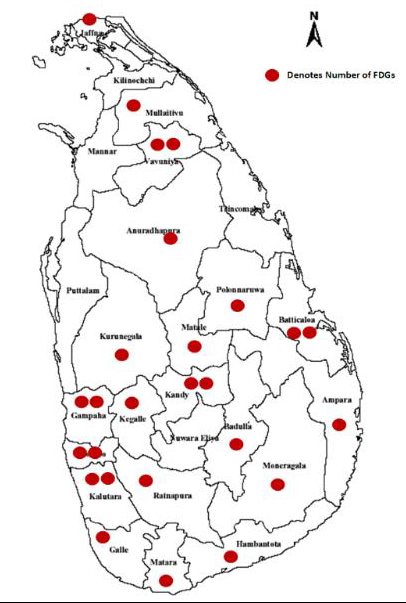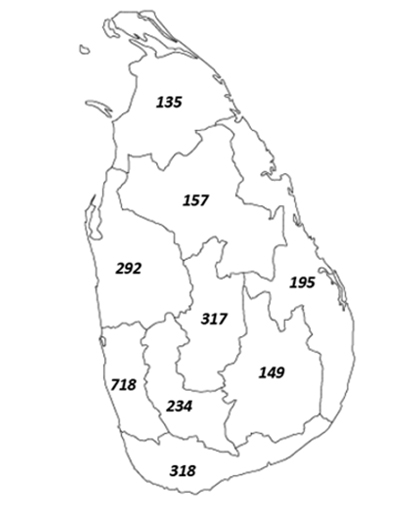The public’s right of access to information, also termed as Access to Information (ATI) / Freedom of Information (FOI) /Right to Information (RTI) is practiced in 127 countries globally. Sri Lanka enacted the RTI act in 2016, and brought to practice in 2017. While the privileges of this act exist for Sri Lankan from its inception, whether the citizens are aware of this right and its relevance to the public and as a result, to what extent the freedom of information has been used to accomplish personal level, community level and national level interests are few questions require answers.
Assessment on Public Awareness on the Right to Information Act
RESEARCH REPORT BY SRL PVT LTD
Summary
This study evaluates the public awareness on the Right to Information Act and their experience of using this right. This was an island-wide conducted statistically robust study which comprised of a desk research, qualitative and quantitative data analysis in order to bring about insights to enhance the utility of the Act in Sri Lanka.
Right to information Act was introduced by the Parliament of the Democratic Socialist Republic of Sri Lanka under the Right to Information Act, No. 12 of 2016. With the establishment of the republic conditions, this concept signifies that the ownership to the general public to obtain public information was evolved. State and the public institutions are maintained by the tax levies of people. Hence, the fundamental principle being established is that the people have the right to know information of which the functions of the state are accomplish using public funds.
In this act, access to information indicates the ability of general public to obtain right and required information without any limitations. It denotes that the free accessibility of information and the diverse range of receiving information practice within the general public for their easy usage. More importantly, RTI ensures state of affairs that protects no restrictions on media and having freedom of access to information without any undue influence.
According to RTI, the responsibility to release information indicates the obligation of releasing the information upon receiving the due request from the respective personnel. In this act, the people have rights to demand information from state institutes and the institutes are bound to release the information accordingly. Similarly, it is a right of the people to receive that information without any delay and with complete accuracy.
Objectives
The primary objective of this study is to improve the implementation of the RIGHT to Information Act (RTI) and to carry out a survey to measure the impact of the implementations that has been done by RTI to support the citizens who lives in Sri Lanka.
A comprehensive study was conducted purely to assess the effectiveness of the implementation of Right to Information Act in order to align with the following objectives…
Objective
Objective
Objective
Methodology
Based on the objectives of the study, a mix research approach. i.e. a Desk Research followed by Qualitative and Quantitative research surveys were conducted to gain a holistic understanding of RTI and its effectiveness.
A desk research was undertaken prior to start the primary surveys with the aim of developing the research frame work to the entire study in the stages of Qualitative and Quantitative. The desk research was done by covering the recent publications such as published books, leaflets, booklets, studies and RTI research conference papers at http://www.rti.gov.lk/media/world-rti-day-2018, publications and latest news on RTI available in RTI websites at https://www.rti.gov.lk/media/publications on the implementation of the RTI Act in Sri Lanka.
A comprehensive Qualitative study consists of Focus Group Discussions (FGD’s) focusing on a cross section of citizens who have applied through RTI Act were carried out prior to Quantitative survey.The qualitative insights required to indicate how RTI Act has impacted on various types of publics in Sri Lanka
The sample selected based on purposive sampling in order to ensure representation of the primary target groups, i.e., those who have made applications to any government institution and who have submitted appeals to the RTIC..
The FGD’s were planned to carry out in all 25 districts in order to capture insights of citizens Island wide. However, there weren’t any database of information applicants could be sourced from few districts; Puttalam, Killinochchi and Nuwara Eliya, Therefore, finally achieved 26 FGDs coverage is presented as follows
A comprehensive Quantitative study was carried out to identify the public perceptions of the RTI Act and its recognition among the public as an instrument for problem solving through RTI elicited information. A random sampling method was applied in all 25 administrative districts to select an adequate sample for the survey.
The sample consisted of citizens from all socio economic groups and linguistic backgrounds. The total sample size planned was 2500 and achieved 2515 considering representation of all 25 districts and other demographic elements such as gender, age, ethnicity, socio economic class etc. The interviews were carried out in Sinhala and Tamil.
The total of 2515 sample size that was achieved for the quantitative phase ensured 95% confidence level at <3% Margin of Error (MoE). This is a statistically valid sample to ensure country level robust analysis of data which ensures fair representation of the general public and hence findings of the study can be generalized.
Sampling Technique and Sample Technique
>18 Years Old
The Universe considered for the study was individuals who are above 18 year old in the country and the population statistics were used from the latest census and statistic study conducted in Sri Lanka.
Different Segments
- Different age groups
- Gender representation
- Different Ethnicities
- Different Localities(Urban-Rural)
>18 Years Old
The Universe considered for the study was individuals who are above 18 year old in the country and the population statistics were used from the latest census and statistic study conducted in Sri Lanka.
Different Segments
- Different age groups
- Gender representation
- Different Ethnicities
- Different Localities(Urban-Rural)
43 Identified Strata
All twenty-five Districts were considered as the first level of stratification.Under each district there are three residential sectors namely Urban, Rural and Estate.Therefore, the second stage stratification will be the sectors in each district, contributing to 75 strata altogether. However, there are four districts with no identifiable urban sector whilst eight districts with no Estate sector. As a result, the finally 43 strata were identified for sample selection.
Right Hand Rule
Right hand rule was used for the selection of the household for the interview and the respondent who were above 18 years old in the selected household were selected using a KISH GRID method / random selection from the computer Aided system where a program will be written to select a member at random considering the number of household members.
Research Process
Quantitative data collection was done using CAPI technology. The finalized and approved questionnaire was scripted to the tabs and data collection was done via tablet and the collected data was saved in to SRL server and data checking was done centrally as well as de-centrally.
Quality Control Measures
A/C
Accompaniments
Accompaniments
Supervisor accompanied first few interviews of each enumerator
BC
Back Checks
Back Checks
30% of each enumerator’s interviews were back checked by supervisors
SC
Spot Checks
Spot Checks
10% of sample Spot checked by the Operation Manager
TBC
Telephonic Back Checks
TBC
Once the data is synced to the server, telephonic back checks
VC
Voice Checks
VC
Parts of interviews randomly get recorded for quality check purpose
MC
Map Checks for GPS
MC
GPS location of the interview is captured to check sampling and authenticity of the selected respondent






